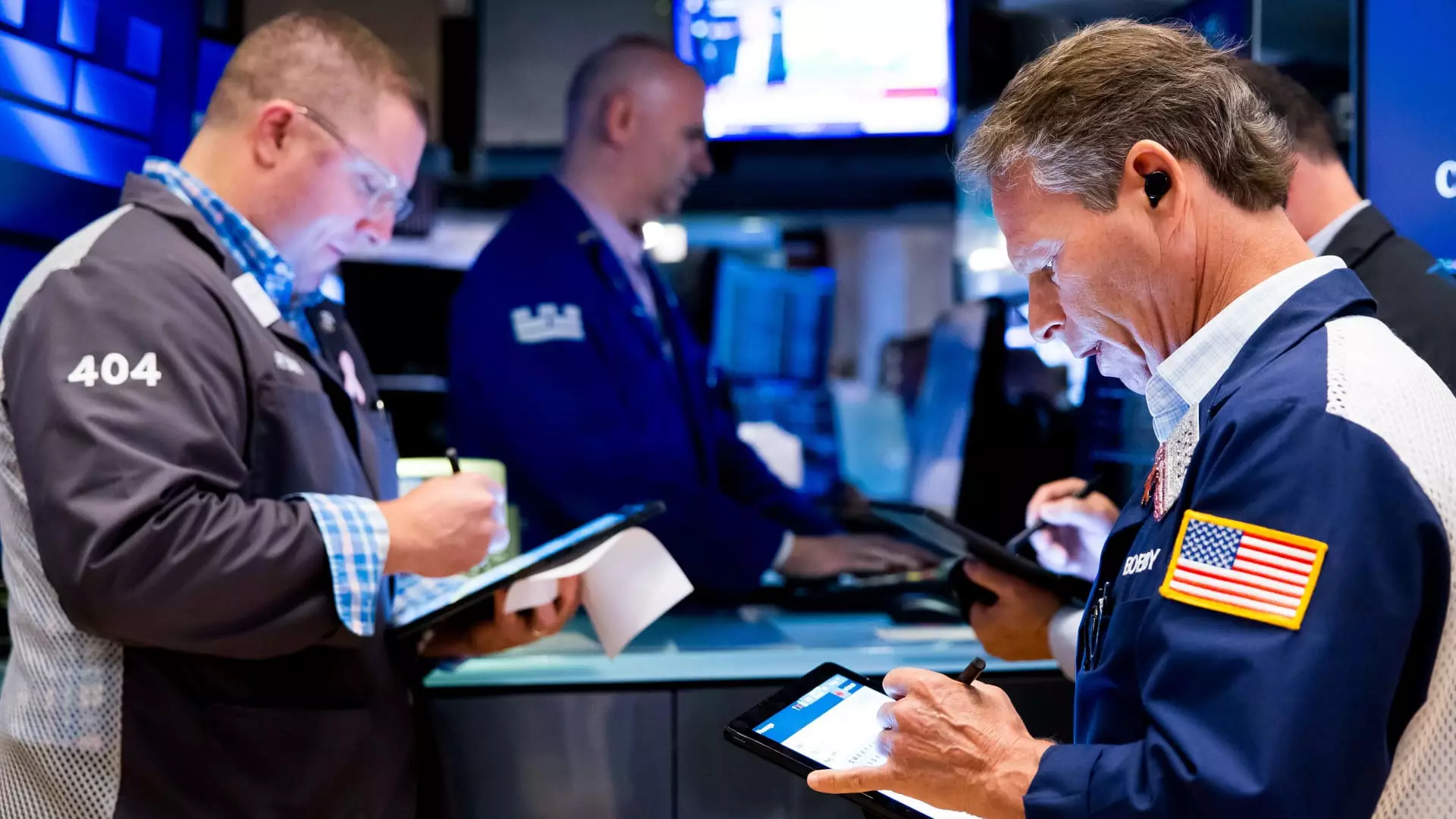In the glow of record-breaking stock indices, it’s tempting to celebrate the apparent robustness of the U.S. economy. Yet, beneath the shimmering surface, this optimism masks deeper vulnerabilities. The recent rally fueled by a surprisingly strong jobs report appears promising, but it’s crucial to interpret these numbers with skepticism. Are they a true reflection of economic health, or merely a façade crafted by short-term market sentiment and policy optimism? The disconnect between stock market exuberance and underlying economic realities warrants a sharp, critical eye.
The jobs data, which exceeded expectations with 147,000 new nonfarm payrolls and a declining unemployment rate to 4.1%, paints a picture of resilience. However, peeling back the layers reveals a more complex story—one where recent private employment figures, like the ADP report showing private payroll declines, serve as stark reminders that the economy’s recovery may be uneven and fragile. Relying solely on headline numbers disregards the quality and sustainability of these jobs, especially when many newly added roles tend to be low-wage or unstable.
Furthermore, the current euphoria seems disconnected from broader economic indicators. Rising yields on Treasury bonds reflect investor uncertainty about future growth rather than outright confidence. In this context, the celebration of stock market peaks risks being a premature high note—an echo chamber that ignores warning signs of underlying economic wounds inflicted by rapid policy shifts, geopolitical tensions, and inflationary pressures.
Policy Overconfidence and Market Hype
Politically, the narrative that the economy is “hanging tough” under duress is comforting to policymakers and investors alike. However, this confidence is dangerously misplaced if it leads to complacency. The Federal Reserve’s decision to hold rates steady, despite mounting evidence of economic headwinds, hints at a shortsighted prioritization of market stability over genuine economic health.
The recent approval of a sweeping tax bill and the anticipation of trade negotiations are symptomatic of a government eager to project long-term stability but simultaneously grappling with short-sighted tactics. President Trump’s aggressive trade stance, exemplified by the looming tariff deadlines with Vietnam, showcases strategies that could backfire in the long run, especially if negotiations turn more hostile. While markets may momentarily shrug off these threats, the risks posed by trade conflicts and protectionist policies are real and potentially devastating.
Market confidence, in this case, seems to be built on the shaky foundation of political bravado rather than substantiated economic progress. When policymakers focus on short-term gains—like stock market highs—they risk ignoring the structural problems that threaten to destabilize the economy in the future.
The Danger of Overconfidence and the False Sense of Security
It’s essential to question whether the current market rally is sustainable or simply a product of fleeting optimism. The fact that markets closed at all-time highs after a mixed batch of economic data is indicative of investor overconfidence. This collective hubris overlooks the cyclical nature of markets and the potential for sudden downturns, especially when driven by speculative fervor rather than solid fundamentals.
Additionally, the political climate’s volatility—be it trade wars or legislative uncertainties—introduces unpredictable risks. Investors tend to underestimate these threats, sufficing with a narrative of resilience that may be vastly overstated. When markets are operating at high valuations amid geopolitical uncertainty and uneven economic growth, the danger lies in complacency. History warns us that complacency often precipitates severe corrections.
The current optimism might be justified in the short term, but it should be accompanied by a sober assessment of the risks. Forgetting that markets are inherently cyclical and subject to shocks is a grave mistake. The belief that the economy is invulnerable ignores the systemic vulnerabilities created by overleveraged sectors, geopolitical tensions, and policy missteps. That false sense of security risks transforming a manageable downturn into a full-blown crisis.
The euphoria that surrounds the American stock markets today is a stark reminder of how quickly sentiment can distort reality. While headline numbers and record indices boost morale, they should be scrutinized through a lens of cautious skepticism. The economy’s resilience is real—but fragile, heavily dependent on political stability, investor confidence, and a succession of lucky policy moves. As history has shown, complacency and uncritical optimism often pave the way for future crises. Responsible optimism requires acknowledging vulnerabilities and preparing for the inevitable waves of volatility that lie ahead. Only then can investors and policymakers avoid the peril of mistaking temporary gains for lasting strength.

Leave a Reply